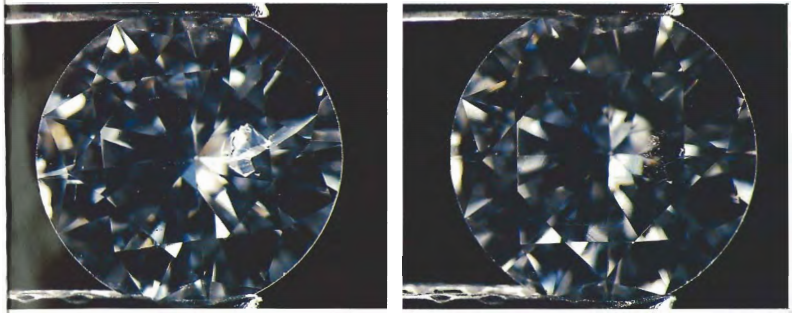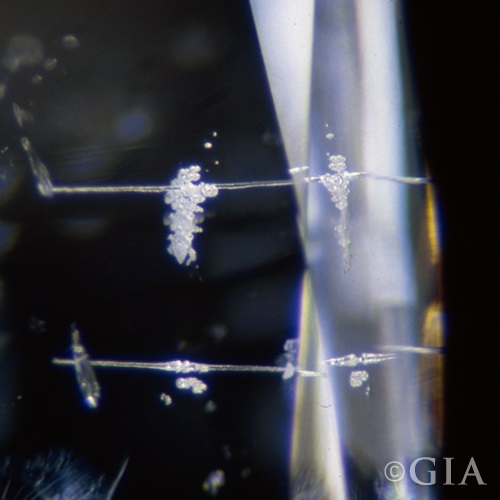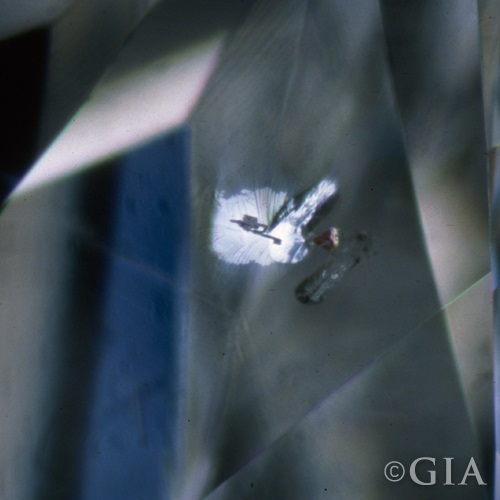
How Are Diamonds Made?
August 25, 2020
How to Buy Engagement Rings on a Budget
March 11, 2021What are Clarity Enhanced Diamonds?

Diamond clarity examines the presence of inclusions and blemishes present with the diamond. Too many inclusions, densely included areas and unsightly positioning of inclusions can all be detrimental to the appearance and durability of a diamond.
During your diamond search, you may come across clarity enhanced diamonds. Sometimes these diamonds are offered as a way to make a saving; other times, the fact they have been enhanced is skimmed over entirely, leaving only the most informed and eagle eyed of customers spotting the truth. In each case, misinformation regarding clarity enhanced diamonds is likely to lead to serious disappointment for diamond buyers.
This guide will cover all aspects of clarity enhanced diamonds and give you a thorough understanding of why you should steer clear of these questionable gems.
What are Clarity Enhanced Diamonds?
A clarity enhanced diamond is a stone that has undergone treatment to correct the appearance of inclusions and blemishes. There are two main types of clarity treatments that are used within the diamond industry; laser drilling and fracture filling. Clarity enhancement can be used to transform very low clarity diamonds (I1, I2) to a much higher clarity.
External Laser Drilling

External laser drilling uses a laser beam to create a microscopic tunnel that drills from the surface of the diamond, down into its structure where the inclusion is located. After the tunnel has been created, a mixture of hydrofluoric acid and sulphuric acid are forced into the small opening in the diamond and used to dissolve and bleach the inclusion.
When completed correctly, external laser drilling does not compromise the structure of a diamond, nor are any remnants of chemicals left withing the stone. Evidence of laser drilling can only be observed under an extremely powerful microscope or by looking at the notations on an inclusion plot graph.
So, in theory, laser drilling should create the possibility for diamonds that are free of obvious inclusions and perfect for your jewelry – sadly this is not the case.
Diamonds that are so heavily included will have issues in other areas, most notably the cut. It is not economically intuitive for a diamond cutter to labour over a heavily included diamond to ensure a fantastic cut; a cutter knows these diamonds will hold little value. This means that when one area of diamond quality is poor, it’s likely all other areas will be poor too. Even with many of the inclusions removed through laser drilling, poor cut quality will result in a dull diamond that does not reflect light properly and thus lacks any fire and brilliance.
Internal Laser Drilling

Internal laser drilling is far more of an issue for diamond buyers, as this form of treatment is often undisclosed. The process involves creating wormlike channels to dark inclusions near the surface of the diamond. These are bleached and dissolved in much the same way as external laser drilling, however, the irregular patterns left by the laser give the impression of being feathers so as to pass them off as natural flaws.
There is both a practical and emotional problem with this. Many consumers can appreciate that, providing inclusions do not affect beauty, they are a natural reminder of the diamond’s origins deep within the earth. For this reason, diamonds man-made inclusions and blemishes (such as laser tunnels or imperfections left from the cutting and polishing process) are widely considered to be less appealing. On a practical level, this method of enhancement is extremely deceptive and is essentially used to trick buyers into purchasing a diamond they believe to be one thing (a naturally higher clarity diamond) when in fact they are paying for something entirely different (a diamond that has received chemical treatment).
Fracture Filling

Surface reaching feathers and cavity inclusions can be removed by polishing; however, this results in a loss of carat weight. Fracture filling is another method of improving the appearance of these inclusions by injecting liquid glass (or a glass like substance) in cracks and scratches.
This process is irreversible and not without fault. Adding another material into the diamond immediately weakens the structure – the fillings can deteriorate and even fall out. Fracture filled diamonds may come with a ‘lifetime repairs’ guarantee but this offers little comfort. A second attempt at fracture filling is rarely as successful as the first, so there is a real risk of a diamond becoming ruined entirely from this process.
Should I Buy a Clarity Enhanced Diamond?
The short answer is no. Aside from the deceptive nature of enhanced diamonds and the obvious durability issues they can create, there is also the matter of price. These diamonds are enhanced to reach VS/VVS clarity grades and thus, shady jewelers use this as the benchmark for their pricing. It may seem as though you are getting a great deal because a natural VS/VVS diamond will cost more, but you are in fact overspending. The prices should be compared to diamonds at the very bottom of the scale (such as I3 diamonds).
Please feel free to contact me with any questions.


